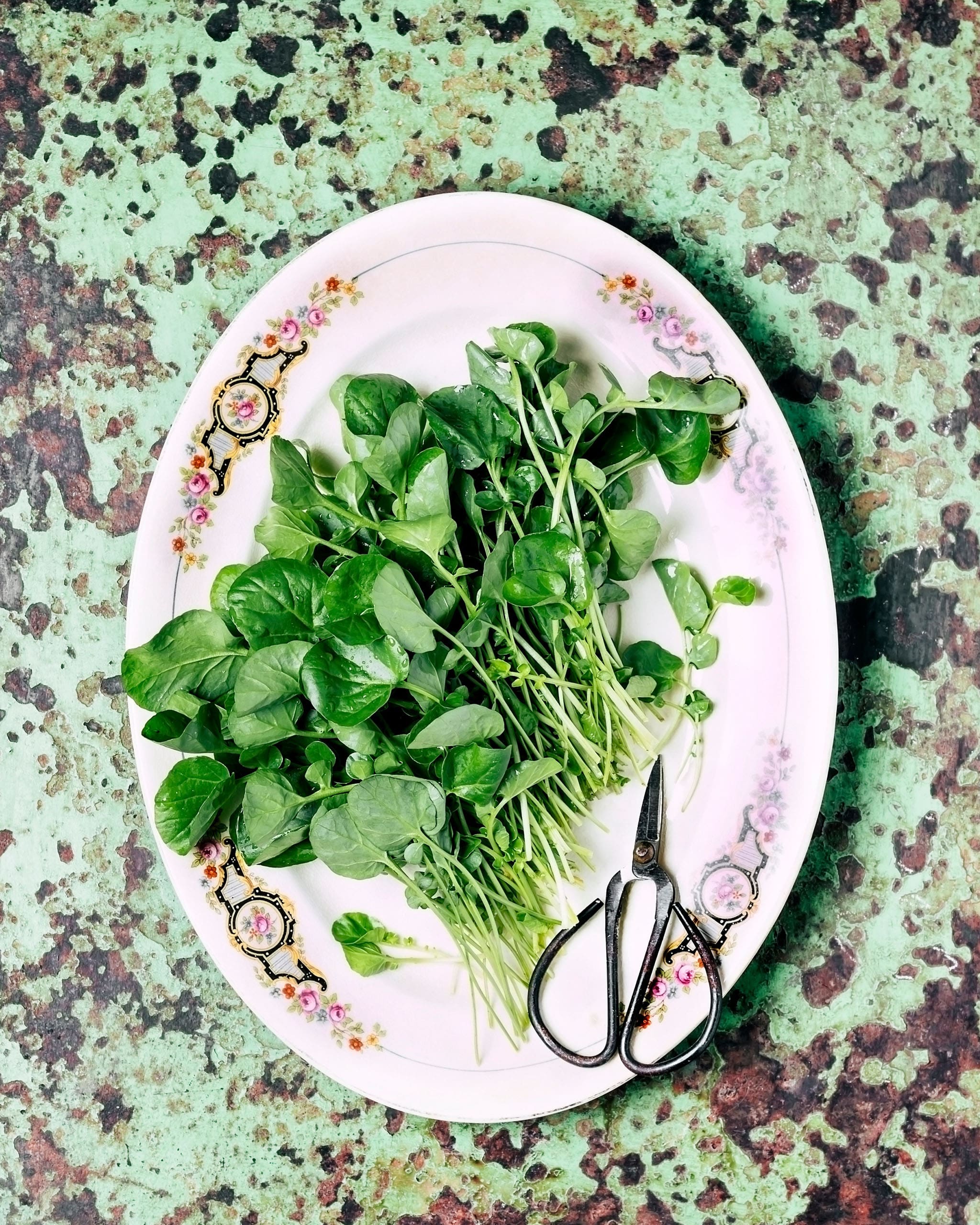Photo: Getty Images
And you can grow it yourself without a garden.
Goji berries, açaí, chia seeds, or the humble, Vitamin C-packed orange? In the search for the healthiest food in the world, researchers at William Paterson University in New Jersey examined 41 types of fruit and vegetables and compared them with each other. The winner—officially titled the most nutrient-dense food in the world—may surprise you: The superfood par excellence can actually be grown and thrive in your home, even if you don’t have a garden.
This is the healthiest food in the world
The researchers in the study examined the foods for their nutrient density. With a total of 100 points, the winner in the ranking of the healthiest foods even beats Chinese cabbage (91.99 points), Swiss chard (89.27 points), beetroot (87.08 points), and also spinach (86.43 points). What’s even healthier than these vegetables? Watercress.
What makes this superfood so healthy?
Watercress (also called watercress) contains a variety of vitamins, minerals, and secondary plant compounds. Just 100 grams of the herb would be enough to cover most of the daily requirement of Vitamin C, meaning watercress contains far more Vitamin C than even oranges and lemons, making it the ultimate immune booster. In addition, the healthiest food in the world scores highly for:
- Large amounts of iron, calcium, potassium, and magnesium—ingredients that are essential for bones and muscle building.
- A significant amount of Vitamin K in cress can help prevent cell damage in the brain.
- Antioxidants in watercress protect against DNA damage caused by free radicals and may even reduce the risk of cancer.
- Essential mustard oils provide a slightly pungent flavor, but also make watercress a natural cough suppressant. In addition, mustard oils have a digestive effect.
- According to the findings of researchers from New Jersey, watercress also has a detoxifying and blood-cleansing effect.
What is watercress, actually?
First of all, watercress is not to be confused with garden cress, which you might remember growing on a plate with a damp paper kitchen roll or some absorbent cotton as a kid. The two species are different in appearance alone: Garden cress has short stems with small leaves, while watercress develops a height of up to 15 centimeters and the leaves have a diameter of about 3 centimeters. The taste is also different: garden cress is reminiscent of radish, while watercress tastes a little like mustard due to—you guessed it—the essential mustard oils present.
Watercress thrives in moist environments, meaning that in nature, it mostly grows near streams and rivers. But you can also grow the seed in a flower pot at home: The most important thing is to keep the soil very moist at all times. This way, watercress can thrive even on the smallest balcony—best in partial shade, by the way.
Why you should still not eat too much of it
100 grams of watercress, as already mentioned, cover most of the daily Vitamin C requirement. However, this corresponds to the amount contained in a large bowl. And you shouldn’t consume that much watercress, as the essential mustard oils can cause bladder, kidney, and stomach irritation if consumed in excess. Instead, watercress is better suited as a side dish or topping on a slice of bread or salad. So, as is often the case, less is more—even with the healthiest food in the world, it seems.
This article was originally published on Vogue.com
- I Have Been Eating Greek Yogurt for Breakfast Every Morning for Three Years—Here Are All the Benefits
- How To Start Meditating When You’re A Chronic Overthinker
- 3 Reasons Why Intermittent Fasting Is Better Than Cutting Calories, According To An Expert
- 9 Healthy (But Overlooked) Foods We Should All Be Eating More Of
